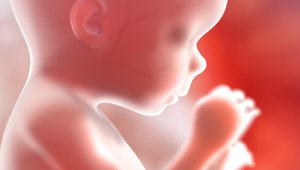How Can Fire Retardants and Pesticides Reach My Unborn Baby?
Is The Placenta a Protective Barrier?

Not long ago scientists thought that the placenta shielded an unborn baby from most toxins a mother consumed and most of our mothers believed this wholeheartedly. What we now know though is; that the umbilical cord carries not only the building blocks of life, but also a steady stream of industrial chemicals, pollutants and pesticides that cross the placenta just as readily as residues from cigarettes and alcohol.
What Does The Placenta Do?
- The placenta is an organ attached to the lining of your uterus during pregnancy. The placenta then links to your baby by the umbilical cord.
- The placenta passes oxygen and food via the umbilical cord to your unborn baby. Waste products from the baby, such as carbon dioxide, pass back along the umbilical cord to the placenta and then into your bloodstream, for your body to dispose of them.
- The placenta also produces hormones that help your baby to grow and develop.
- The placenta may provide some protection against infection for your baby while it’s in the womb. It protects your baby against most bacteria. However, it does not protect your baby against viruses such as German measles etc
- Towards the end of your pregnancy the umbilical cord pulses with the equivalent of at least 300 quarts of blood each day passing antibodies from you to your baby, giving them immunity for about three months after birth.
Why The Placenta Is Not The Barrier We Once Thought.
While the placenta may offer some protection from infection it does not provide a barrier against the passage of alcohol, nicotine and other drugs like we once thought which can in turn then cause damage to our unborn baby’s.
Clinical studies tell us that up to 60% of what we put onto our skin makes its way into our bloodstream.
Direct absorption through the skin means that substances bypass the body’s major filtering organs such as the kidneys and the liver, which would normally assist with toxin removal. Researchers can now demonstrate that once these chemicals enter our own blood stream they can be transferred through to our unborn babies.
In a study spearheaded by the Environmental Working Group (EWG) in collaboration with Commonweal, researchers at two major laboratories found an average of 200 industrial chemicals and pollutants in umbilical cord blood from 10 babies born in August and September of 2004 in U.S. hospitals.
Tests revealed a total of 287 chemicals in the group. The umbilical cord blood of these 10 children tested, harbored pesticides, consumer product ingredients and wastes from burning coal, gasoline, and garbage.
Among them are eight perfluorochemicals used as stain and oil repellants in fast food packaging, clothes and textiles — including the Teflon chemical PFOA,— dozens of widely used brominated flame retardants and their toxic by-products; and numerous pesticides.
Of the 287 chemicals we detected in umbilical cord blood, we know that
- 180 cause cancer in humans or animals,
- 217 are toxic to the brain and nervous system,
- 208 cause birth defects or abnormal development in animal tests
The dangers of pre- or post-natal exposure to this complex mixture of carcinogens, developmental toxins and neurotoxins have never been studied.
It would seem that the human “body burden” — the pollution that permeates into the cells of our body also deeply influences babies in the womb. With this in mind I would urge all couples planning to become conceive and those who are currently pregnant to take great care with all items they consume. Including the quality of the foods they eat, the quality of their water and other beverages, avoiding alcohol and other drugs (where possible).
Please consider the chemicals in your self-care products and other nasties in your home and work place. Remembering that the placenta does indeed carry not only the building blocks of life, but also a steady stream of industrial chemicals, pollutants and pesticides and residues from cigarettes and alcohol.
Jennifer Barham-Floreani
Bach. Chiropractic, Bach. App Clinical Science
Registered internationally, no longer practicing as a chiropractor in Australia.
. . . . .
 For more information about Pregnancy, Birth & Beyond,
For more information about Pregnancy, Birth & Beyond,
please refer to Well Adjusted Babies — which includes
Jennifer’s well-researched, easy-to-read information about…
 Improving Fertility Improving Fertility                                                                                          |
                                                                                                         |
Take a look at Well Adjusted Babies here.
https://www.ewg.org/reports/bodyburden2/execsumm.php


 For more information about Pregnancy, Birth & Beyond,
For more information about Pregnancy, Birth & Beyond,
